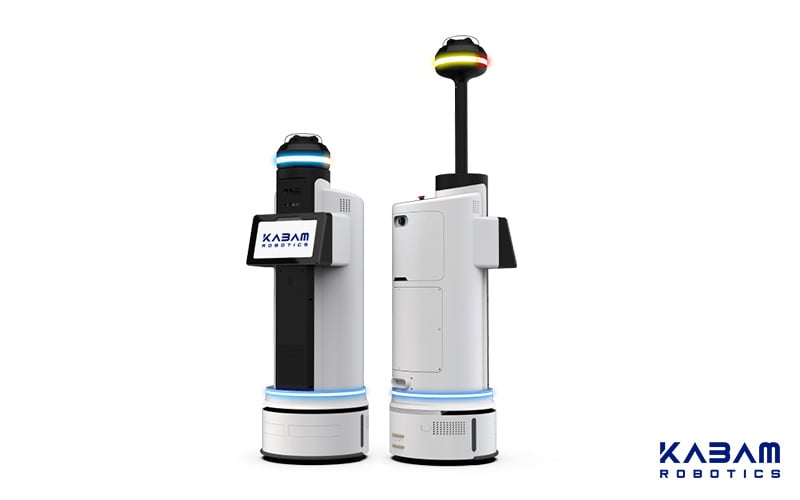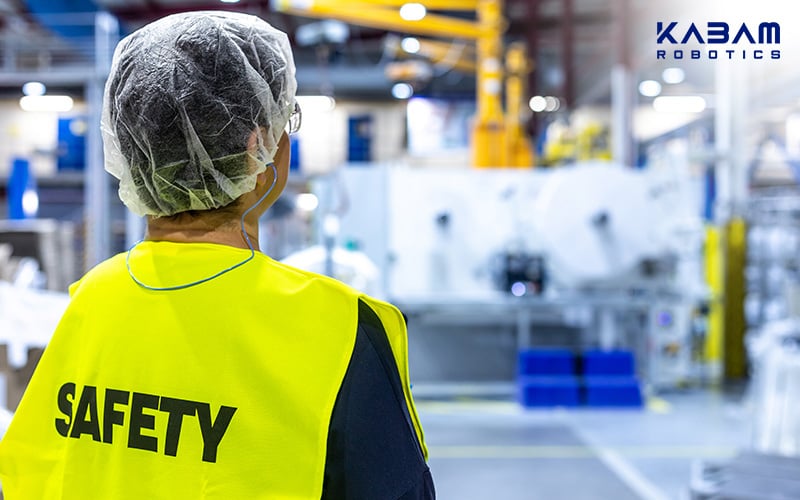
Key Takeaways:
-
What Problems Does Robotics Middleware Framework (RMF) Solve in Multi-Robot Environments?
Robotics Middleware Framework (RMF) eliminates incompatibility between robots from different vendors by serving as a unifying communication layer. It prevents siloed operations, reduces infrastructure redundancy, and enables seamless coordination.
-
Why Is Device-Agnostic Control Critical for Scalability?
A device-agnostic middleware like KABAM’s allows robots to integrate with elevators, doors, and sensors regardless of brand. This flexibility ensures smoother cross-system interactions and supports scalable, vendor-neutral deployments across entire facilities.
-
How Does Robotics Middleware Framework (RMF) Enable Real-Time Coordination?
Robotics Middleware Framework (RMF) facilitates instant data sharing between robots and building systems. This enables smart behaviors and makes large-scale automation more future-ready.
Introduction
As robots become a fixture in industries ranging from logistics and cleaning to security and delivery, one question keeps surfacing: how do different robots and systems work together seamlessly? Especially when they come from different manufacturers?
The answer lies in the Robotics Middleware Framework (RMF), a software layer that serves as a universal translator between robots, infrastructure, and control systems. It enables real-time communication, device interoperability, and scalable deployment of robotic systems.
Why RMF Matters in Multi-Robot & Multi-Vendor Environments
Robotics middleware framework (RMF) enables robots of various types and brands to operate together smoothly, without requiring custom integrations. It allows for real-time coordination, device-agnostic control, and large-scale automation, laying the groundwork for efficient, future-ready robotics deployments.
1. Challenges with Multi-Brand Robot Fleets
In modern facilities, it’s common to find robots from different manufacturers performing various tasks,such as cleaning, patrolling, and last-mile delivery. The challenge? Each brand typically runs on its own software and communication protocol. Without a unifying layer, this leads to:
- Incompatibility between robot systems
- Inefficient siloed operations
- Higher costs from duplicated infrastructure upgrades
2. The Need for Device-Agnostic Control Layers
To overcome this fragmentation, RMF serves as a device-agnostic control layer, allowing robots to plug into the same ecosystem regardless of vendor. It connects not just the robots themselves, but also:
- Elevators
- Doors
- Floor sensors
- Building access systems
3. Real-Time Data Exchange and Coordination
One of the core functions of middleware is to facilitate real-time data sharing and task coordination between different systems. For example:
- Robots can avoid traffic jams by sharing route updates.
- Cleaning robots can pause operations if a delivery robot passes through.
- Security robots can trigger building responses (e.g., locking doors, raising alerts).
Popular Robotics Middleware Frameworks in the Industry
1. ROS & ROS2 (Robot Operating System)
ROS (Robot Operating System) is a widely adopted open-source middleware framework in the robotics community. It provides:
- A modular architecture for adding and integrating components.
- Tools for navigation, vision, control, and simulation.
- A large open-source ecosystem for rapid prototyping.
ROS2, the latest version, improves on real-time performance and reliability, making it better suited for industrial and commercial deployments.
2. DDS (Data Distribution Service)
DDS is the communication backbone for many robotic systems. It is ideal for real-time coordination across robot fleets and smart infrastructure. It enables:
- High-performance, low-latency data sharing.
- Scalable publish-subscribe messaging.
- Quality of service (QoS) guarantees for critical data.
3. Other Emerging or Proprietary Frameworks
Some companies have developed proprietary middleware solutions to support their ecosystem of robots and services. Examples include:
- Microsoft Azure’s robotics platform
- Amazon AWS RoboMaker
- Vendor-specific APIs from autonomous robot manufacturers
While these platforms can offer tight integration and support, they may lack flexibility and lock users into a single ecosystem.
4. Limitations of Open-Source Middleware in Commercial Use
Despite its advantages, open-source middleware like ROS and RMF has limitations in enterprise settings:
- Requires skilled engineers to implement and maintain.
- May lack commercial-grade support and certifications.
- Integration with legacy infrastructure can be time-consuming.
How KABAM’s Platform Functions as a Robotics Middleware
Overview of KABAM’s Device-Agnostic Integration Layer
KABAM’s middleware platform acts as a universal integration layer that connects robots, sensors, and building systems. It’s designed to eliminate compatibility issues and allow new robots to be added without complex reconfiguration.
Key benefits include:
- Vendor-neutral connectivity
- Standardized communication protocols
- Support for both cloud and on-premise deployments
Support for Multi-Robot & Multi-Brand Deployments
KABAMsupports a wide range of autonomous mobile robots (AMRs) for different functions, including surveillance, patrolling, and threat detection. Its robotic platform enables these robots to operate across multi-floor buildings and coordinate with minimal human intervention.
Cloud-Based Robot Management Software
KABAM’s cloud platform centralizes control across multiple sites for streamlined security operations. It allows teams to monitor robot activities, deploy units, and respond to incidents—all from a single, intuitive dashboard.
Built with enterprise-grade encryption, the solution ensures robust data protection and compliance with top-tier security standards. Customizable user permissions enable role-based access control, while comprehensive system logs provide full audit trails for transparency and accountability. Together, these features deliver a secure and scalable foundation for managing robotic security fleets.
Autonomous Robot Use Cases: Patrol, Surveillance, Inspection
KABAM’s intelligent robotics ecosystem supports a wide range of real-world applications across indoor and outdoor environments. Powered by AI and coordinated through a unified middleware platform, these autonomous robots deliver reliable and scalable solutions for:
Patrolling: Airport security or concierge robots perform routine patrols independently, covering large or multi-floor areas with minimal human oversight.

Surveillance: Equipped with 360-degree vision and advanced video analytics, they enable robot surveillance in malls, construction sites, and event venues. These solutions can detect anomalies and deter threats through integrated alerts or deterrence systems.
Inspection: Integrated with building systems and site maps, the robots can navigate complex environments, access restricted zones, and inspect facilities for safety, security, or operational efficiency. They are commonly seen in data centers, factories, and hospitals.
Conclusion: Why Middleware Is Essential for Scalable Robotics
As Singapore and other tech-forward cities invest in robotics to address labor shortages and increase efficiency, the need for standardized, scalable interoperability becomes clear.
Robotics middleware frameworks like Open RMF and commercial platforms like KABAMprovide the infrastructure needed for:
- Multi-brand robot coordination
- Smart building integration
- Real-time orchestration at scale
The future of robotics lies not just in smarter robots, but in smarter ways for them to work together. Essentially, middleware is the key.
FAQs About Robotics Middleware Frameworks
Can middleware help scale robotic operations across large facilities?
Yes. Middleware provides a unified control layer that streamlines the deployment and management of robot fleets across expansive sites. Eliminating the need to overhaul existing systems makes it easier to expand fleets and scale operations efficiently.
2. How does middleware improve coordination in multi-brand robot fleets?
It acts as a unifying communication layer that bridges different robot brands and their proprietary protocols. This ensures seamless interoperability, allowing robots to share data, coordinate tasks in real time, and operate as a cohesive unit without the need for complex, custom-built integrations.
3. What is Open RMF?
Open RMF is an open-source platform developed by Open Robotics. It enables interoperability across different robot types and building systems.
For more information on our services, please contact us today.


